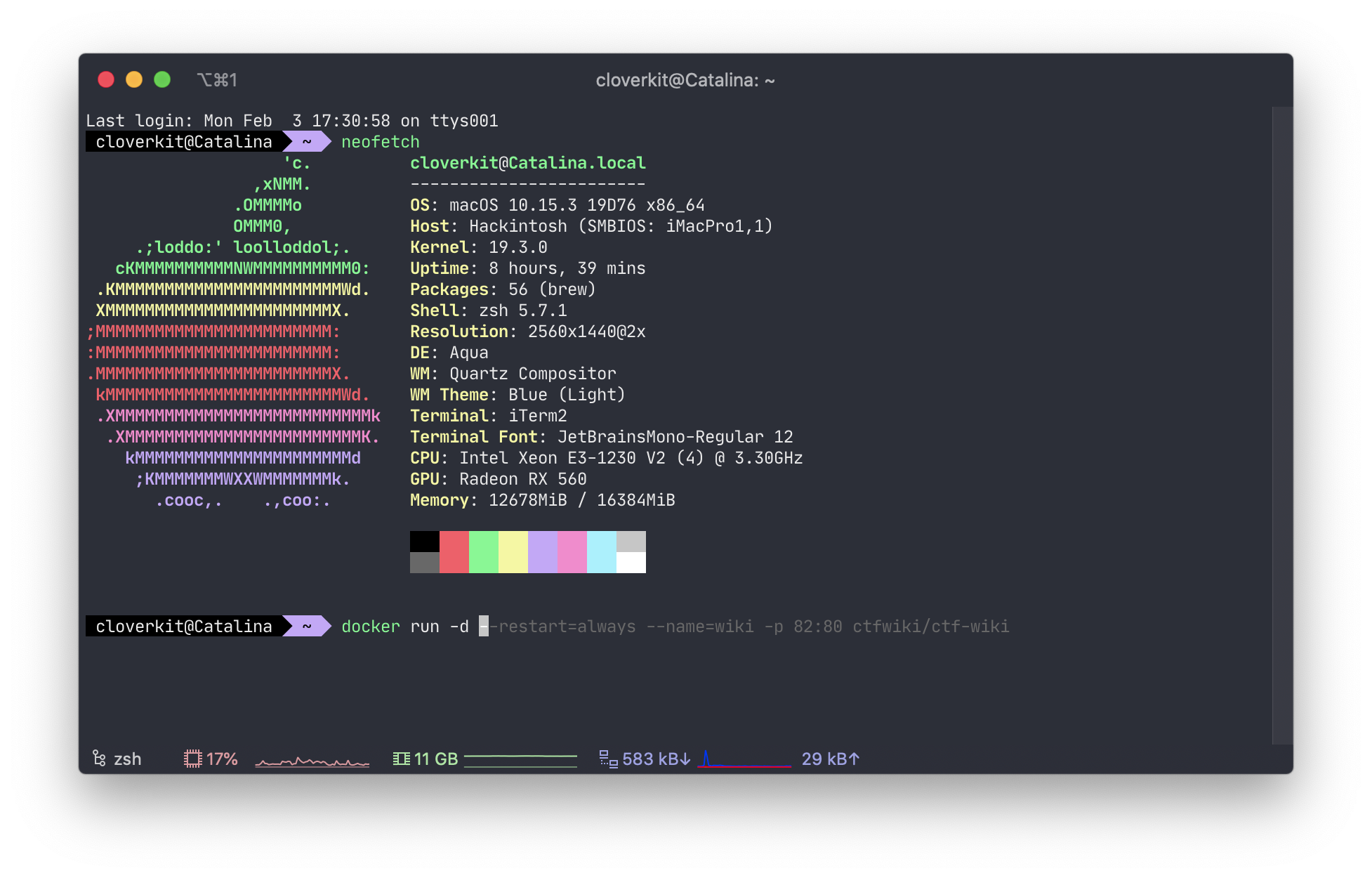
- Linux iterm profiles how to#
- Linux iterm profiles install#
- Linux iterm profiles plus#
- Linux iterm profiles mac#
- Linux iterm profiles windows#
However, being able to use command as Alt is more important to me so personally I’m OK with the changes I made. This mean you need to use option + v for paste instead of command + v. This is not really perfect, as now you have to use option as the command key. command key works like Alt key in Linux.Overall, these changes has the following effects The last change is to use option for switching tabs so that you could still use the actual command key for switching tabs, which I’m so used to personally. The second change swaps left option and left command, this is not a must but it aligns the position of Alt with normal Windows/Linux keyboards. The first change makes your left option key behave like the meta key instead of a special key in macOS that outputs special characters when followed by letters. Preferences -> Keys -> Navigation shortcut -> Option for switching tabs.Preferences -> Keys -> Remap modifier key -> Swap left option and left command.Preferences -> Profiles -> Keys -> Left option key as +Esc.You need to change the following settings in iTerm 2.
Linux iterm profiles how to#
In this post, I will describe how to have Linux-like key binding in iTerm 2 for the Alt key. This key, however, behaves differently on Mac. Alt is the prefix of many terminal shortcuts and I also use the Alt key in tmux to switch between panes within a window. When I work in terminal on Linux, I use the Alt key very often. It's complicated but we have four different views at the same time just for this example.I work regularly on both Linux and Mac.

Linux iterm profiles windows#
Tmux creates "windows" which each has the ability to split the window into smaller windows called "panes". Tmux should be installed on your remote host, but if you are doing mostly local work, running a local version is no problem. Once you have the package installed, you can confirm the version number, for this demo I am using Tmux 2.4. This installs the latest version of Tmux.
Linux iterm profiles install#
If you are on a Mac, Homebrew can install the latest version with the following command. Note - I tried both the package version from yum and building my own version, which I didn't find any big differences. So you need to install and create the Tmux sessions on a remote host, which you ssh into. Now, this can be your local laptop but if you're traveling or disconnecting from remote hosts, this doesn't really improve anything over using multiple local ssh sessions. You will start up Tmux and create a session where you want to save your work. Installing the most current version is not too difficult, just remember to have C compilers installed. But it's important to know that most package managers only have the older version of Tmux (I just checked Epel and it's listing Tmux 1.6, which was released in 2015). This key, however, behaves differently on Mac. Installing Tmux can be done in a few different ways. So here are my steps to get Tmux and iTerm2 working and making it as helpful as possible.

While setting up Tmux is simple, you can install the older version through most package managers, getting to have it seamlessly work is another thing. Now when you need to leave, shutdown and after you arrive at home reconnect the session and it's like nothing happened! If you have a slow Internet connection like I do at home, this will come in handy. With Tmux, you could have this running on your remote development host (Linux or FreeBSD) and log in to this host, start-up Tmux and run the same command as previously mentioned.

For example, if you need to run multiple commands on remote hosts which take hours to complete, but need to drive home, your choices would be to add the "no-hup" option before the command and "&" to set the command in the background. The great thing about Tmux is the ability to keep a session running after you log out of the host or lose connection. If you're new to Tmux, this application allows you to create a session which holds multiple windows (workspaces) and panes (workspaces broke down into multiple windows). So a few years back I explored the idea of using Tmux. This gets confusing after ten or so tabs. But each new ssh session I need, I create a new tab. Seriously if you have a Mac, install Homebrew.
Linux iterm profiles mac#
Actually, the Nethack is running on my Mac thanks to Homebrew. All of this will be disconnected when I head for home.
Linux iterm profiles plus#
Oh, I also need to keep track of what's going on in tab 7, plus the other sessions. As the screenshot shows, I need to improve my Nethack skills.


 0 kommentar(er)
0 kommentar(er)
